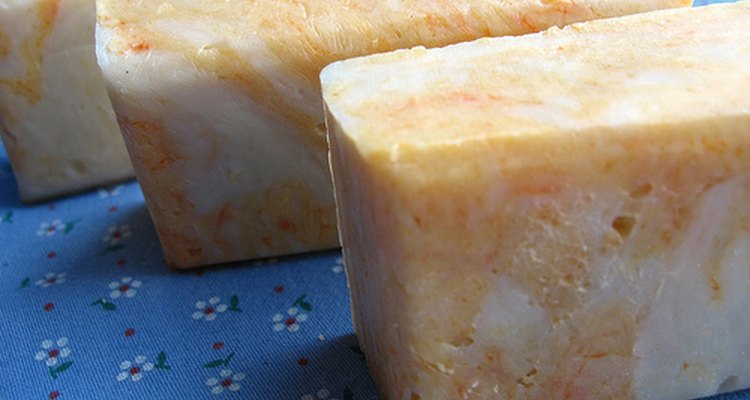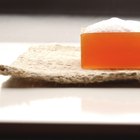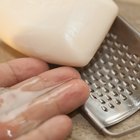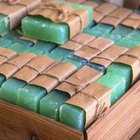
Soaps made from lye are very common and relatively easy to make. While lye soap has been used and appreciated throughout history, it has also gained a reputation as sometimes being harsh and irritating to the skin. For this reason, and because lye itself is a caustic agent, questions may be raised about the safety of lye soap.
Benefits
Properly made and aged, lye soaps are very safe as effective cleansers and have a variety of uses including personal hygiene, household cleaning and clothes washing. Bar soaps, liquid soaps, laundry and body soaps can all be made with lye.
History
Lye soap has been around for thousands of years. In fact, archaeologists have discovered ancient Mesopotamian writings on a papyrus scroll that revealed instructions on how to use alkaline salts and animal fats or vegetable oils to make lye soap. Wood ash was also used in soap making. Early Americans made soap primarily by running water through the ashes to form a lye solution, rather than using the ashes directly. While it produced a higher quality soap, the strength of the lye solution was sometimes unpredictable and occasionally produced soaps that would either not set or remained caustic. Advances in the production and quality of lye has greatly reduced any risks in commercially available soaps.
Chemistry
Lye soap is made through a chemical process known as saponification. A solution of lye, a chemical called sodium hydroxide, is combined with vegetable oils or rendered animal fats and heated to allow the ingredients to combine and react chemically. When the ingredients are completely combined, the hot liquid soap is poured into molds and allowed to cool and cure. The aging process often lasts for several months to allow the lye and oils to finish reacting, making it safe to use.
Warning
Lye itself is extremely caustic. When making lye soap at home, caution should be taken to handle lye with great care. Lye, mixed improperly, can have explosive results. Also, lye soap that is improperly made can have too much or insufficiently mixed lye in it and remain caustic. Soap that is improperly aged can also be caustic.
Effects
When exposed to skin, lye itself produces severe chemical burns. Homemade soap that is not properly mixed or cured can still have high amounts of lye and can be very irritating and even produce burns. Vinegar or other mild acids can stop the effects of a lye burn but will not reverse any damage done. Properly made and aged lye soap is not caustic and will not irritate or burn the skin.
Related Articles

What Is Coal Tar Soap?

Difference Between Soap & Synthetic ...

Importance of a Soap Detergent

What Is Dye Made From?

What Are the Benefits of Olive Oil Soap?

What Are the Functions of Sodium ...

How Does Homemade Soap Compare to ...

Ingredients of Bar Soap

How Does Soap Kill Germs?

How to Make Bar Soap Into Liquid Soap ...

How to Make Aloe & Seaweed Lotion

How to Mix Magnesium Sulfate to Treat ...
How Long Can Food Stored in Canning ...

Grandpa's Pine Tar Soap Ingredients

Description of Palmolive Bar Soap

What Is "Cultured Cream"?
How to Soften Crystalized Molasses

Difference Between Fermented Milk & ...

How to Make Grapefruit Seed Extract

How to Make Homemade Liquid Rouge
References
Writer Bio
In Jacksonville, Fla., Frank Whittemore is a content strategist with over a decade of experience as a hospital corpsman in the U.S. Navy and a licensed paramedic. He has over 15 years experience writing for several Fortune 500 companies. Whittemore writes on topics in medicine, nature, science, technology, the arts, cuisine, travel and sports.
Photo Credits
Image by Flickr.com, courtesy of Vanessa Yvonne